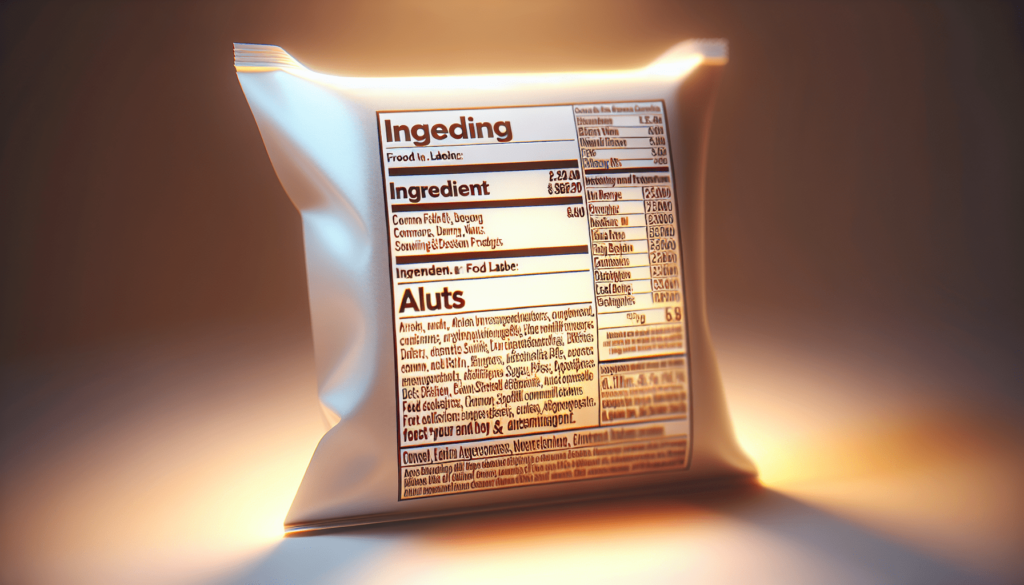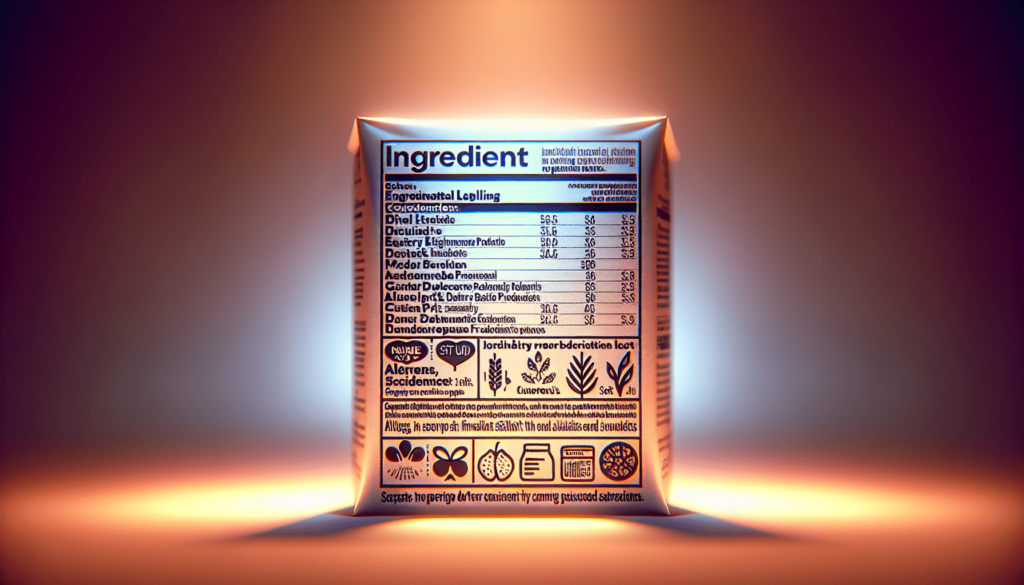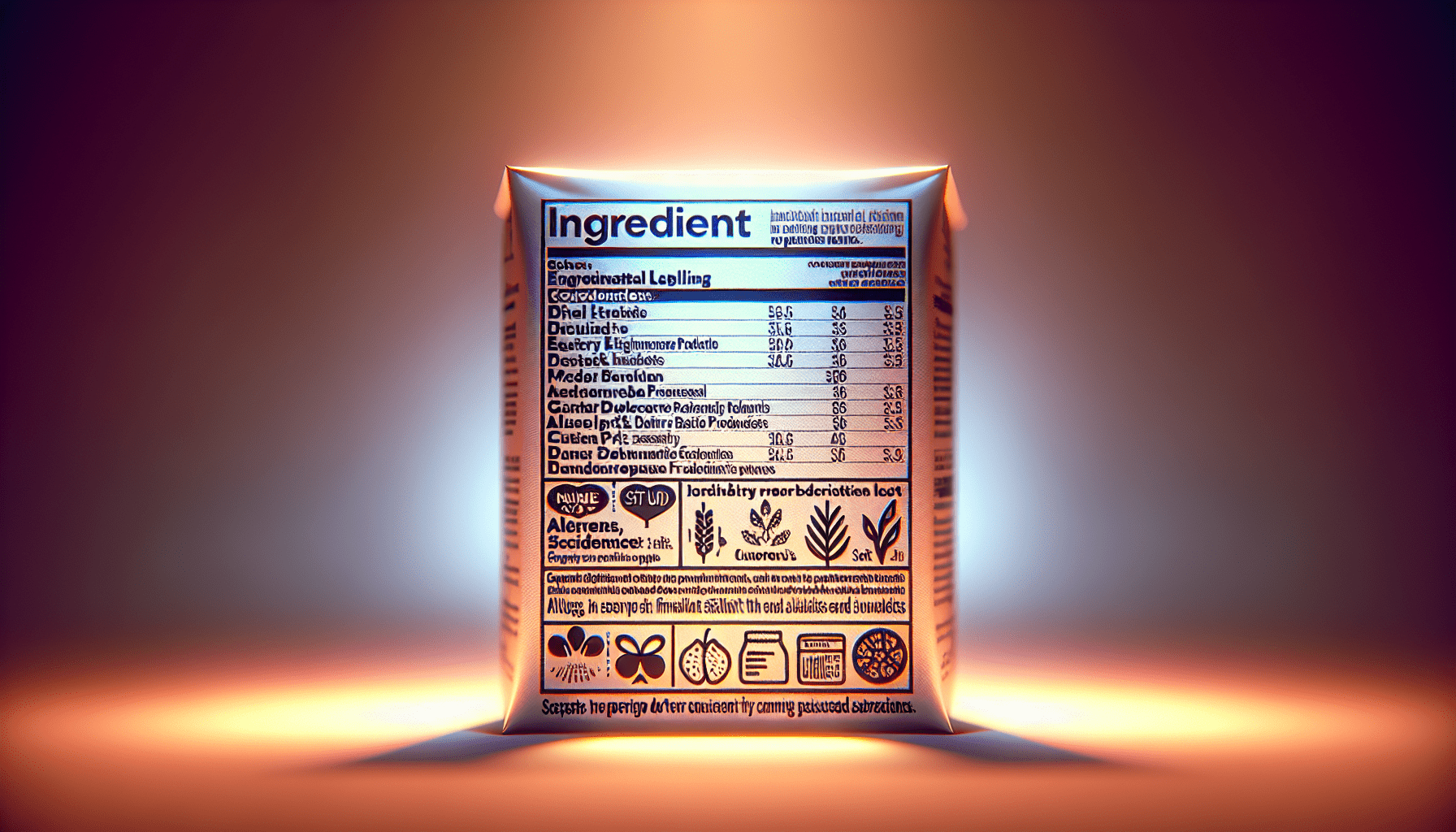Do you ever find yourself in the grocery store, staring at food labels and wondering if a product is safe for you or a loved one with food allergies? Navigating food labels can sometimes feel like deciphering a secret code, especially when you’re vigilant about avoiding certain allergens. Knowing exactly what to look for can make shopping less stressful and help ensure that what you’re putting in your cart is safe for everyone to enjoy. Below, we’ll guide you through the basics of understanding food labels specifically for allergens, offering tips and insights that cater to your needs.

Understanding Food Labels: A Basic Overview
Food labels can seem overwhelming with their fine print and scientific terms. However, they are an essential resource for anyone with food allergies or dietary restrictions. These labels provide crucial information about ingredients, nutritional value, and potential allergens. Understanding how to read and interpret them is vital for your safety and health.
Decoding the Ingredient List
The ingredient list on a food package is your first line of defense against allergens. Ingredients are typically listed in descending order by weight, meaning the first few ingredients constitute the bulk of the product. Knowing which ingredients to watch out for can help you avoid allergenic food.
Allergen Statements: What to Look For
Under U.S. law, certain allergens must be clearly listed on food labels. This includes the so-called “Big Eight” allergens: milk, eggs, fish, shellfish, tree nuts, peanuts, wheat, and soy. You’ll often find allergen statements at the end of the ingredient list, making it easier for you to quickly identify whether a product contains your allergen.
The “Big Eight” Allergens and How They Are Labeled
Understanding the “Big Eight” allergens is crucial because they are responsible for the majority of allergic reactions. Here’s a closer look at how these common allergens are typically listed on food packaging:
Milk
Milk can be found in an array of products, from obvious dairy items to processed foods. On labels, usually look for terms like “milk,” “cream,” and other derivatives like “casein” or “whey.”
| Allergen | Possible Label Wording |
|---|---|
| Milk | Milk, cream, casein, whey, butter, cheese |
Eggs
Eggs might appear in bakery products, pasta, and even beverages. Ingredients like “albumin” or “ovum” typically indicate the presence of eggs.
| Allergen | Possible Label Wording |
|---|---|
| Eggs | Egg, albumin, ovum, mayonnaise |
Fish and Shellfish
Both fish and shellfish must be declared clearly, as they can cause severe allergic reactions. Watch out for less apparent names like “surimi” (imitation crab meat) and “bouillabaisse.”
| Allergen | Possible Label Wording |
|---|---|
| Fish | Fish, cod, salmon, surimi |
| Shellfish | Shellfish, shrimp, crab, lobster, bouillabaisse |
Peanuts and Tree Nuts
Peanuts and tree nuts often show up in baked goods, cereals, and more. Look for specific nut names, such as almonds or cashews, rather than just “nuts.”
| Allergen | Possible Label Wording |
|---|---|
| Peanuts | Peanut, groundnut, beer nut, arachis oil |
| Tree Nuts | Almond, walnut, cashew, pecan, pine nut |
Wheat and Soy
Wheat and soy are found in many processed foods, sauces, and snacks. Ingredients such as “soy lecithin” or “wheat starch” typically indicate their presence.
| Allergen | Possible Label Wording |
|---|---|
| Wheat | Wheat, flour, semolina |
| Soy | Soy, soy lecithin, tofu |
Reading Beyond Allergens: Hidden Ingredients and Cross-Contamination
Sometimes allergens can be hidden in less obvious places, or there might be a risk of cross-contamination during manufacturing. Here’s how you can take a step further in understanding potential risks:
Hidden Ingredients
Certain food additives may derive from common allergens but aren’t listed clearly on the ingredient list. Terms like “natural flavors” or “spices” could sometimes contain allergens.
Cross-Contamination Risk
Statements such as “May contain traces of…” indicate cross-contamination possibilities. This is especially important if you have severe allergies.
Different Labeling Requirements in Different Countries
Although the basics of allergen labeling are similar in many countries, there are regional differences. It’s crucial to understand these distinctions, especially if you’re traveling or purchasing foods from international markets.
Labeling Requirements in the U.S.
The FDA mandates that allergens must be listed by their common names and all allergens must be declared even if they are present in flavorings or additives.
European Union Directives
The EU has strict regulations, requiring allergens to be emphasized in the ingredient list. This can often be seen with bold text or different fonts.
Other International Standards
Countries like Canada and Australia have their specific requirements, but they generally require the clear declaration of potential allergens in a way similar to U.S. and EU guidelines.

Practical Tips for Navigating Food Labels
To make the process easier, here are some practical tips for efficiently navigating food labels to avoid allergens:
Plan Ahead
Before you go shopping, try to write down a list of safe brands and products. Understanding which brands disclose their ingredients clearly can save you time and headaches.
Utilize Apps
Various apps can assist you in scanning products’ barcodes to identify allergens quickly. These digital tools can be a lifesaver in the bustling aisles of a grocery store.
Don’t Hesitate to Contact Manufacturers
If you’re ever in doubt, reaching out to a manufacturer for clarification about their ingredient list or manufacturing processes is entirely within your rights and strongly advisable.
What to Do if You Experience an Allergic Reaction
Hopefully, with careful label reading, you’ll avoid allergic reactions. Still, it’s important to be prepared and know what actions to take if an allergic reaction occurs.
Recognizing Symptoms
Knowing the symptoms of an allergic reaction can be the difference between life and death. These symptoms can include hives, swelling, difficulty breathing, and anaphylaxis.
Immediate Actions
In the case of a severe reaction, administer an epinephrine shot right away and call emergency services. Keeping an epinephrine auto-injector on hand is wise for those with known severe allergies.
Why Staying Informed Matters
The world of food manufacturing is always evolving, with new products and formulations continually entering the market. Staying informed can ensure that you’re always prepared.
Continuous Learning
Whether it’s attending allergy seminars, subscribing to food safety news, or participating in online communities, learning continuously can make a huge difference in effective allergen management.
Sharing Knowledge
If you have expertise in managing food allergies, sharing your knowledge with others can be incredibly rewarding. Your experiences can be an invaluable resource to someone just starting their journey.
Conclusion
Understanding food labels for allergens is an essential skill, not just for those with allergies, but also for their families and caregivers. It requires careful attention to detail and a willingness to continually update your knowledge. But once you feel comfortable navigating these labels, a whole world of safe and delicious possibilities will open up for you—one that allows everyone to gather around the table without worry. Remember, knowledge is empowerment when it comes to managing allergens, and your journey through the grocery aisles can indeed be both safe and enjoyable.
